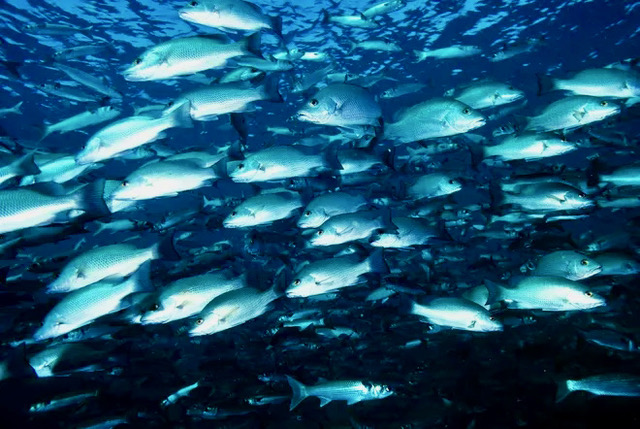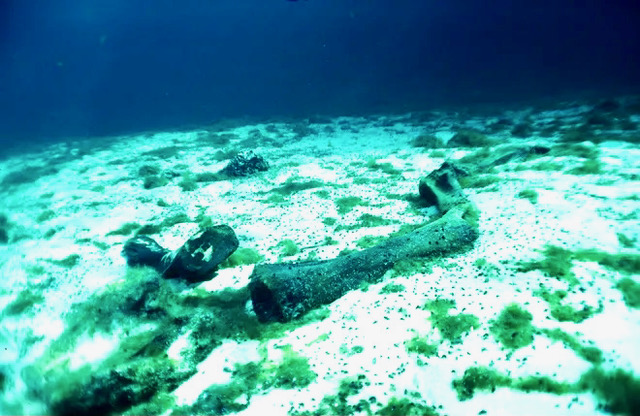By Doug Stamm, photographer
In the 1970s I started documenting the underwater world of Florida’s springs. As a biologist/diver I was moved and intrigued by the beauty and size of so many springs rising from the earth.
I became fascinated by their remarkable clarity and the abundant diversity of life so clearly visible in their transparent headsprings, rivers and runs.
I thought the world should know these places better. So for years that followed I camped by springs for months at a time, entering their waters day and night in all seasons of the year.
I gained access to the great depths of Wakulla Springs and the immense fossil-laden cave at the source of Silver Springs. I dove big springs and small, entered caves, dove with mermaids, crawled down spring runs at night and drifted spring rivers for miles underwater, all this with camera in hand to document these many realms and the underwater wildlife in them.

In 1993 Pineapple Press in Sarasota took the resulting collection of images and published “The Springs of Florida.” It remains today, now in its third edition, a field guide identifying many springs inhabitants and serves as a reference for those who want to know more about spring ecosystems in Florida.
Each chapter is introduced by William Bartram, who after 200 years still best describes these places. But the book now in many cases is no longer an accurate look at Florida’s springs. If there is a fourth edition I’ll have to change it because many springs have changed — a lot. Some are in trouble.
We have not been good stewards of our natural resources. William Bartram would be disappointed. And I can show you.
Voices more eloquent than mine, photographers better than me and scientists more knowledgeable than most of us have long shown us and told us our springs are changing and why. We know we are pouring excess nitrates into their aquifer source through over-development, poor septic systems and over-fertilization of our fields and lawns.
We know we are pumping too much water from our aquifer, decreasing spring flow and health. The quality of spring water is declining as is the diversity of wildlife in them. And I can show you.
Why should we care about springs? Because simply they are canaries in our coal mine. If not for the sake of preserving freshwater environments unique on our Earth, then we should care for them because for many of us they are the same water we drink. Some spring waters that once gave us the purest water on Earth now carry nitrates approaching levels unsafe for human consumption. Springs are changing. And I can show you.
Look at one of the pictures from my book of Crystal River’s headspring, taken in 1978. The water was crystal clear, hundreds of mangrove snappers hung on the limestone ledges of its headspring pool, others hid in the deep recesses of its cavern, thousands of mullet circled its basin, bream and bass mixed with sheepshead and snook. Manatees cruised its chasm. It was a visible fusion of freshwater springs and the sea, a wondrous place.

The headspring of Crystal River in 1978 was a crystal-clear basin where largemouth bass and bream mixed with hundreds of schooling snapper and thousands of mullet. (Doug Stamm Photo).
I was there a few years ago, and those vistas were gone. The water was cloudy and green. If the great schools of fish were there, I couldn’t see them. An invasive algae called Lyngbya, fueled by excess nitrates, suffocated the spring and river and replaced the native eel grass with black mats of algae.
The spring was dying. Though protected in the Crystal River National Wildlife Refuge, the historic wintering waters of the manatee had changed.
In recent years local businesses and residents of Crystal River realized the health of their economy and their community depended on the health of their springs. They began extensive restoration projects to remove the algae and replant the river with native eel grass. Aided by countywide fertilizer application restrictions, it’s working.
I was there again recently. The headspring is changing again. The water is clearing, surrounding eel grass beds are extensive and growing. The fish are returning. It’s far from the wondrous world you see in the photo, but neither is it the dying spring of 2015.
There is other good news. Some springs in recent years have become state parks and their headsprings and immediate surroundings are now protected. But springs are only as healthy as their recharge areas that often extend for hundreds of square miles around them.
Wakulla Springs is a hopeful example of what is possible if efforts are made to restore our springs. Look at the 1978 picture from my book of the fossil mastodon bones lying on the floor of Wakulla Springs’ basin. The first cave explorers removed them from the deep cave below and set them on the spring floor so they would be visible to passengers on glass bottom boats touring almost 100 feet above on the surface.

Take a good look, because if you go there now you won’t be able to see them. The glass-bottom boats rarely run anymore. The water is too turbid, and the aquifer is changing.
What was once a great natural aquarium filled with life was taken over by algae and exotic plant species fed by excess nutrients in the spring’s recharge area. The once ubiquitous springs resident, the apple snail, disappeared from Wakulla Springs, as did Florida’s iconic limpkin that needed them for food.
But in recent years the park service and Tallahassee, working together with surrounding counties, have made important steps to limit nitrate nutrient flow into the springs recharge area. Nutrient levels are falling, visibility is increasing, a few apple snails have returned. Perhaps the limpkins will follow.
It’s a start. And maybe someday from a glass-bottom boat you’ll again be able to see the abundant life and the mastodon bones almost 100 feet down in the largest and deepest spring in the world.
Positive change is possible, and we need it in our springs heartland. But we as Florida residents too often have the sky-is-falling care fatigue. It’s understandable. We are told almost every day sea levels are rising, manatees are starving, the springs are in trouble. There is seemingly little we can do.
But there is something we can do, we must do. We know the problems. We know the solutions. We can learn from the successes of science-based restoration efforts like Wakulla and Crystal River and apply them elsewhere.
We can join and support organizations like the Florida Springs Institute and the Springs Eternal Project that support research and public awareness. We can join and support locally based springs organizations for individual springs near us. And we can put people into political office who have the will to do the hard work that addresses the larger issues of our aquifer. Let those who decide the fate of your water know you’re concerned. And vote.
I’m guardedly optimistic a fourth edition of “The Springs of Florida” would be able to say we have finally learned to value this great natural resource, and we’ve begun to do what we must to restore and protect them.
We have a long way to go to be better stewards. But from what I’ve seen lately, I have hope we can begin to return springs to their rightful and vibrant place in our world. If we do I’ll go back in the water and show you.
This piece originally appeared in the Gainesville Sun.
Doug Stamm is an award-winning writer and photographer.
“The Invading Sea” is the opinion arm of the Florida Climate Reporting Network, a collaborative of news organizations across the state focusing on the threats posed by the warming climate.



